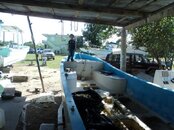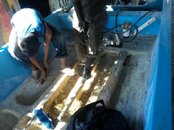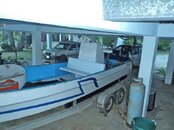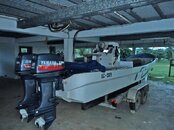Hank49
Contributor
I have been noticing some "sloshing" sound when I rock my boat while it's sitting on the trailer. I cut a hole and put a port hole in the deck but only got a little water out.
So, I decided to take it to some glass experts (notice the guys working with fiberglass, no shoes, short sleeves, no masks ). They cut the whole floor out and found water in the stringers, not so much in the foam filled compartments. They're now going to drill holes to connect all the compartments so they drain to the bilge. Only a cool $1750.00 job.
). They cut the whole floor out and found water in the stringers, not so much in the foam filled compartments. They're now going to drill holes to connect all the compartments so they drain to the bilge. Only a cool $1750.00 job.
And, it figures....the weather is all time calm...not to mention a full moon right now.....and I have no boat.
The snappers can rest easy for a few days.



So, I decided to take it to some glass experts (notice the guys working with fiberglass, no shoes, short sleeves, no masks
And, it figures....the weather is all time calm...not to mention a full moon right now.....and I have no boat.
The snappers can rest easy for a few days.









